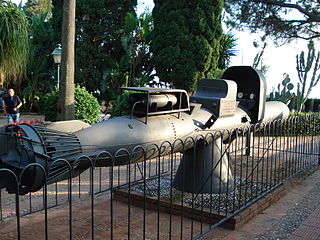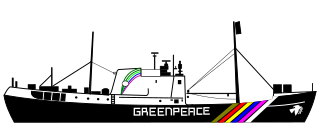 W
WThe Invasion of the Falkland Islands, code-named Operation Rosario, was a military operation launched by Argentine forces on 2 April 1982, to capture the Falkland Islands, and served as a catalyst for the subsequent Falklands War. The Argentines mounted amphibious landings and the invasion ended with the surrender of Falkland Government House.
 W
WOperation Algeciras was a foiled Argentine plan to sabotage a Royal Navy warship in Gibraltar during the Falklands War. The Argentine reasoning was that if the British military felt vulnerable in Europe, they would decide to keep some vessels in European waters rather than send them to the Falklands.
 W
WThe Raid on Algiers took place on 11 December 1942, in the Algiers harbour. Italian manned torpedoes and commando frogmen from the Decima Flottiglia MAS were brought to Algiers aboard the Perla-class submarine Ambra. The participating commandos were captured after setting limpet mines which sank two Allied ships and damaged two more.
 W
WBritain's commando frogman force is now the Special Boat Service (SBS), whose members are drawn largely from the Royal Marines. They perform various operations on land as well as in the water. Until the late 1990s, all members of the Special Air Service (SAS) Boat Troop were trained as commando frogmen.
 W
WThe Clearance Diving Branch is the specialist diving unit of the Royal Australian Navy (RAN) whose versatile role covers all spheres of military diving, and includes explosive ordnance disposal and maritime counter-terrorism. The Branch has evolved from traditional maritime diving, and explosive ordnance disposal, to include a special operations focus.
 W
WCOMSUBIN is the Italian Navy's special forces unit.
 W
WThe F470 Combat Rubber Raiding Craft (CRRC), also known as the "Combat Rubber Reconnaissance Craft," is a specially fabricated rubber inflatable boat often used by the U.S. Navy, U.S. Marine Corps, the U.S. Army, and others. The CRRC is typically called "Zodiac," referring to the boat's manufacturer, Zodiac Milpro leading to this boat being the name "Zodiac" has become synonymous with the CRRC in popular culture.
 W
WLieutenant-Commander Lionel Kenneth Phillip Crabb,, known as Buster Crabb, was a Royal Navy frogman and MI6 diver who vanished during a reconnaissance mission around a Soviet cruiser berthed at Portsmouth Dockyard in 1956.
 W
WThe Decima Flottiglia MAS was an Italian flotilla, with commando frogman unit, of the Regia Marina created during the Fascist regime.
 W
WIan Edward Fraser was an English diving pioneer and recipient of the Victoria Cross, the highest award for gallantry in the face of the enemy that can be awarded to British and Commonwealth forces. Fraser was born in Ealing in Middlesex and went to school in High Wycombe. After initially working on merchant ships and serving in the Royal Naval Reserve, he joined the Royal Navy at the start of the Second World War. After being awarded the Distinguished Service Cross for actions while serving on submarines, he was placed in command of a midget submarine during an attack in Singapore codenamed Operation Struggle. For his bravery in successfully navigating the mined waters, and successfully placing mines on a Japanese cruiser, Fraser was awarded the Victoria Cross.
 W
WNaval Special Forces Command, also called the Kampfschwimmer or Verwendungsgruppe 3402 are an elite special forces unit of the Germany Navy, specializing in commando and amphibious warfare operations. They are the only special-purpose force of the German Navy. The Kampfschwimmer were set up when Germany joined NATO in 1955.They serve a similar role to Americas top tier [DEVGRU] unit. They are frequently asked to conduct operations with their counter parts. Such as Americas [DEVGRU] the French [Hubert commandos] and Polands [JW GROM]
 W
WHuman torpedoes or manned torpedoes are a type of diver propulsion vehicle on which the diver rides, generally in a seated position behind a fairing. They were used as secret naval weapons in World War II. The basic concept is still in use.
 W
WThe Frogmen Command Center is the premier frogman and underwater demolition unit of the Indonesian Navy. The unit's motto is in Sanskrit: "Tan Hana Wighna Tan Sirna". The unit's main duties are underwater demolition, destroying main underwater installations, reconnaissance, prisoner snatches, preparing beaches for larger naval amphibious operations, and counter-terrorism. During peacetime, the unit also deploys a team to serve as security personnel for VIPs and VVIPs. The personnel of Kopaska are recruited from Indonesian Navy seamen. Like other Indonesian special forces, Kopaska is trained to be able to conduct operations in the sea, including underwater, on land and airborne.
 W
WJohn Henry Lang (1899–1970) was an American who served with the Canadian Army in World War I and then with the United States Navy through World War II and the end of his career. He earned military awards and honors for heroic service from the United Kingdom, the United States, and Japan in the first half of the twentieth century.
 W
WThe Naval Service Diving Section (NSDS) is a specialist unit of the Irish Naval Service, a branch of the Defence Forces, the military of Ireland. The Naval Service Diving Section specialises in underwater diving tasks for the Naval Service, and since its formation in the early 1960s has become Ireland's most advanced diving team, aiding other state agencies in various specialist roles.
 W
WThe auxiliary ship Olterra was a 5,000 ton Italian tanker scuttled by her own crew at Algeciras in the Bay of Gibraltar on 10 June 1940, after the entry of Italy in World War II. She was recovered in 1942 by a special unit of the Decima Flottiglia MAS to be used as an undercover base for manned torpedoes in order to attack Allied shipping at Gibraltar.
 W
WThe Raid on Alexandria was carried out on 19 December 1941 by Italian Navy divers of the Decima Flottiglia MAS, who attacked and disabled two Royal Navy battleships in the harbour of Alexandria, Egypt, using manned torpedoes.
 W
WThe sinking of the Rainbow Warrior, codenamed Opération Satanique, was a bombing operation by the "action" branch of the French foreign intelligence services, the Direction générale de la sécurité extérieure (DGSE), carried out on 10 July 1985. During the operation, two operatives sank the flagship of the Greenpeace fleet, the Rainbow Warrior, at the Port of Auckland in New Zealand on its way to a protest against a planned French nuclear test in Moruroa. Fernando Pereira, a photographer, drowned on the sinking ship.
 W
WThe Russian commando frogmen are a Russian Naval Spetsnaz unit under operational subordination to the Main Intelligence Directorate (GRU). It is the special forces unit of the Russian Naval Infantry and is composed of highly trained and elite marines within the Naval Infantry. It is also part of the Coastal Troops of the Russian Navy. The navy itself does not field any special forces or special operations units. Russian FSB special forces Alpha Group and Vympel also have frogman units in their respective naval components.
 W
WThe Siluro San Bartolomeo was an Italian Human Torpedo designed during World War II, used by the Decima Flottiglia MAS for commando style operations. When using the Siluro a Lenta Corsa Maiale Human Torpedo had noticed some limitations, demonstrating the need for an updated version. The project was managed and developed by the engineer of the Genio Naval, Mayor Mario Masciulli, with the help of Captain G.N Travaglino and engineer Guido Cattaneo. The improvement in the materials available for the assembly and parallel new technologies led to a far superior product to the point of not being able to identify and as an outgrowth of the "Siluro a Lenta Corsa" SLC Maiale.
 W
WThe Underwater Demolition Teams (UDT) were a special-purpose force established by the United States Navy during World War II. They came to be considered more elite and tactical during the Korean and Vietnam Wars. Their primary WWII function began with the reconnaissance and removal of natural or man-made obstacles on beaches prior to amphibious landings. They later were assigned to assist in the recovery of space capsules and astronauts after splash down in the Mercury and Apollo space flight programs. The United States Navy's Underwater Demolition Teams were pioneers in underwater demolition, closed-circuit diving, combat swimming, and midget submarine operations. Commando training was added making them the forerunner to the United States Navy SEAL program that exists today.
 W
WUSS Westchester County (LST-1167) was a Terrebonne Parish-class tank landing ship built for the United States Navy at the tail end of the Korean War. Named for Westchester County, New York, she was the only U.S. Naval vessel to bear the name. The ship served in the Vietnam War and was damaged by limpet mines set by Viet Cong frogmen. It was repaired and later sold to the Turkish Navy and finally sunk as a target in 2014.